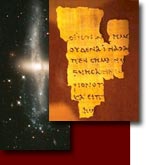| Site Map | Contacts | Links | Newsletter | |
Genesis:
Genesis 10 - The Table of Nations
7 Key Points
- There is a fondness for the number 7. Japhet's sons and grandsons total 7. This is by design just like the genealogies in Matthew one are 3 groups of 14.
- There is a total of 70 nations which was the common belief in the ancient world. 70 is also a traditional round number for large group of descendants (Wenham 1987, 213). This is only a small part of the world that we know from that day. There is no mention of the far East like China or Japan. Nor is there any mention of Indians in North or South America. Acts 2 seems to be a reversal of Babel. It reflects the view of the world at that time which is similar to the division of the earth among the signs of the zodiac (Bruce 1977, 61). The Jewish Midrash (Tanchuma 26c) said that the earth was divided into 70 languages.
- A majority of scholars see a first-millennium date for this chapter, because some of the people listed were not known until this time. For example, the Philistines did not come to Canaan until 1200 BC. Oded argues that this chapter is based on the early view that man was divided into three groups, urban dwellers (Ham), nomadic peoples (Shem), and seafarers (Japhet).
- While many names mentioned are personal, others are place names, like Sidon and Sheba, and others are group names like Amorites.
- "Son of " can mean a treaty relationship, not a blood line. It may refer to the political or geographical relationship, and not genealogical lines (Wenham 1987, 215).
- The geography of Genesis 10 is similar to geography in the ancient Near East. The Babylonian map of the world pictures a circle earth surrounded by a circular sea with islands (nagu) across the sea (Horowitz 1990, 35). Japheth seems to inhabit the islands of the sea which surround the circular earth. The Sargon Geography which is preserved on several tablets also has similar geography (Horowitz 1998, 67).
- There is a chiastic structure to this genealogy. Noah's sons are listed in this order: Shem, Ham, and Japheth; then they are discussed in reverse order (Hamilton 1990, 331).
Next - Genesis 11:1-9 - The Tower of
Babel
Bibliography
